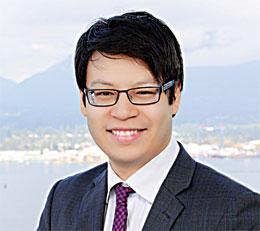Immigration updates for International Students working after graduation

By Victor Ing,
Special to The Post
For many years Immigration, Refugees, and Citizenship Canada (IRCC) has introduced new programs and policies to attract international students to complete post-secondary studies in Canada. The result has been a dramatic increase in the number of international students living in Canada who are making significant contributions to the economy. Many of these international students want to eventually become Canadian permanent residents but are unsure about what they must do to legally stay and work in Canada after completing their studies. Recent updates to the IRCC website made on February 21, 2020 provide much clearer guidance to international students to help them understand the rules that apply to them after graduation.
International students who graduate from public post-secondary institutions or graduate with certain degrees or diplomas from eligible private post-secondary institutions can receive a post-graduation work permit (PGWP), which allows them to work full-time in any occupation and location. PGWPs are highly sought after because they allow students to earn valuable Canadian work experience that is essential for international students to qualify for permanent residence. Earning work experience after graduation is important because none of the work experience gained while studying full-time, such as through a co-op work term, counts towards meeting the minimum requirements for immigrating to Canada.
The criteria for how to qualify and apply for PGWPs have continuously changed over the years. The last major changes were made in February 2019 to make it easier for international students to apply for them. Previously, international students only had 90 days from the time they graduated to apply for PGWPs and they were required to hold valid student permits when they apply. Due to the relatively short 90-day deadline, most students who wanted to apply for PGWPs had to apply from inside Canada and remain in the country until the PGWPs were approved, just in case something went wrong with the application process. These criteria were modified in February 2019 to extend the deadline from 90 days to 6 months after graduation, which made it easier to apply for a PGWP from outside the country.
The recent updates to the IRCC website provide clarity to international students about whether they can work after graduation. First, IRCC’s website now clearly explains that international students can begin working right after they have filed applications for PGWPs, even if they have not yet received their permits in the mail. Second, IRCC has clarified that international students can leave Canada while waiting for their PGWPs to be approved, and they maintain the ability to return to work when they come back to Canada. This is a very important point of clarification for those students who are eager to return home to see their friends and family after graduation because many of them have remained continuously in Canada and have not had the chance to go home for years in some cases. Students wanting to leave Canada for a short trip, however, need to make sure they have valid visas to fly back to Canada.
As an immigration lawyer I often meet with international students who have many questions about what they need to do before and after graduation to obtain their PGWPs and how they might obtain permanent resident status. IRCC’s new updates answer two of the most frequently asked questions by international students: When can I start working after graduation? Can I go home or go on vacation after I apply for a PGWP? It is very encouraging to see that IRCC is taking proactive steps to answer these important questions so that international students can fully understand what the rules are and make appropriate plans post-graduation.
Victor Ing is a lawyer of Sas & Ing Immigration Law Centre. He provides a full range of immigration services.
For more information go to canadian-visa-lawyer.com or email victor@sasanding.com.









